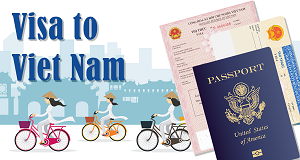Latest figures on drug abuse & Day against drug abuse
Ha Noi, June 25 (VNA) -- The latest figures on drug abuse in Viet Nam have rung an alarm-bell for individuals, families, and social policy-makers. They reveal a problem that seems poised to threaten the sustainable development of the country.
The country detected more than 101,000 drug addicts who as a group are estimated to spend VND 2,000 billion (USD 133 million) a year on illicit drugs. Each drug addict spends about USD 1,300 a years on drugs, this is nearly double the per capita GDP of Viet Nam. Worse still, drug users account for 70 percent of the 28,000 HIV/AIDS victims found in the country.
About 90 percent of the known addicts are living in the community; the rest are behind bars. Child addicts numbered 4,800 and student addicts numbered more than 1,500 by the end of last year. Of the 61 provinces and cities nationwide, 29 successfully checked drug abuse while the number of drug addicts continued to rise in 32 others.
In response to the International Day Against Drug Abuse, which falls on June 26, the Government of Viet Nam launched this June as the month of action to fight drug abuse.
During the month ending on June 18, the police, customes office, and border guard forces investigated and discovered 761 drug-related cases, arresting 1,189 people, up 135 cases and 210 people compared to May's figures. Relevant agencies confiscated 2.89 kg of heroin, 25 kg of opium, 4,211 doses of addictive susbstance, 1,620 ampoules of narcotic drugs, 528 ATS pills, 76 motorbikes, 17 handphone sets, VND 232 million and USD 80,000.
Drugs are trafficked into Viet Nam by land, sea, and air routes as Viet Nam is located near world drug centres such as the "Golden Triangle" and "Golden Crescent".
The Viet Nam-Laos border, particulary the northwestern provinces of Lai Chau and Son La and the northern central provinces of Nghe An, Ha Tinh and Thanh Hoa, are the main routes for the entry of illicit drugs into enter Viet Nam, making up more than 60 percent of the country's confiscated heroin and other addictive drugs. Meanwhile, almost 80 percent of confiscated addiction-forming pills found their way to Viet Nam through Viet Nam-China border provinces of Lao Cai, Quang Ninh, and Cao Bang. Marijuana, heroin, amphetamines, and esctasy pills were trafficked into Viet Nam through the Viet Nam-Cambodia border. Ha Noi and Ho Chi Minh City are home to large-scale drug trafficking centres and rings, making up 51 percent of discovered cases and 56.4 percent of drug-related offenders nationwide.
In the 1998-2000 period, the Public Security Ministry coordinated with the National Defence Ministry and the General Department of Customs Office to launch drug crack-down operations along three land border routes and four key localities: Ha Noi, Ho Chi Minh City, the northwestern Lai Chau province, and the northern central Nghe An province. They discovered 30,366 drug-related cases and arrested 60,735 suspects, up 2.3 and 2.4 times compared to those figures of the 1995-97 period. They confiscated almost 164 kg of heroin, 1,862 kg of opium, 2,900 kg of marijuana, more than 250,000 doses of addictive substances and 295,000 ampoules of narcotic drugs.
The Ministry of Education has joined the Ministry of Labour, War Invalids and Social Affairs and the Ministry of Public Security to exercise drastic efforts to curb drug abuse in recent years. However, the results remain modest.
In parallel with crack downs on drug-related crimes, treatment for drug addicts also received great attention. The country now has 53 provincial detoxification centres capable of accommodating between 100 and 200 addicts each, and more than 700 centres at the grassroots levels.
The drive to pursuade people to replace the opium poppy with other crops has obtained initial results, helping improve the local people's living conditions. Some 40 percent of the households in the former poppy-growing areas are now leading a better and more stable life.
Education establishments have closely coordinated with families to provide necessary knowledge to their children on the adverse effects of drug use. Pupils and students have been advised not to get involved in any form of using, storing, or trading illicit drugs.--VNA



